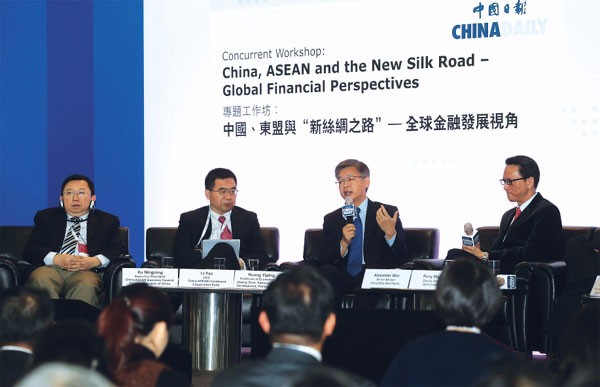2015-01-23
Sophia Lo

Mainland outbound direct investment (ODI) is for the first time set to exceed inbound figures, underscoring a trend where the world’s second-biggest economy is poised to become a net outbound investment destination. China’s ODI for 2014 surged 14.1 percent to a new high of $102.9 billion, while foreign direct investment (FDI) rose an annual 1.7 percent to a record $119.56 billion, according to the Ministry of Commerce. Huang Yiping, deputy dean of the National School of Development at Peking University, believes Hong Kong will be given full play amid this scenario, as the nation’s corporate sector, spurred by a cooling economy, is looking offshore to expand its footprint and boost profits. For decades, the mainland has lured multinational manufacturers with cheap labor, business-friendly policies and low-cost raw materials. However, the era of cheap China may be drawing to a close. Official data show that Chinese real income adjusted for inflation increased 8 percent last year, with rural income growing 11.2 percent, even faster than its urban counterpart. Costs are soaring, beginning with the coastal provinces where factories have historically been clustered and where employers are losing their power to draw workers from the hinterland, Huang told China Daily. “As a result, Chinese businesses have set about plowing money overseas to lower costs but find they haven’t got the slightest idea where and how to invest,” Huang said. As a world-class financial service provider, Hong Kong therefore can gear up to help Chinese firms with outbound investment, observed Huang. With China initiating the setting up of the 21st Century Maritime Silk Road, Silk Road Fund and Asia Infrastructure Investment Bank in a move to boost regional investment and economies, Hong Kong will continue to make a big difference despite worries that the SAR may be eclipsed by the rise of Shanghai and other first-tier mainland cities, Huang explained. Uncertainties over these strategic initiatives have sparked doubts and vehement opposition from many developed countries. But the skepticism concerning China’s transparency and governance is quite understandable, Huang said. “The point is how we can shape these landmark initiatives into an open platform for system design and membership. And more importantly, instead of putting forward too many colorful initiatives, working on one or two projects and showcasing our ability will be much more constructive,” Huang pointed out. A further concern is such generous investment may trigger public anger at home as mainland education and medical sectors also need financial support, and under the current political system Chinese taxpayers still cannot check whether the government spends the money in a useful way. Huang pointed out that such concerns highlight the significance of a shift from government-dominated ODI to private enterprises-dominated ODI in the near future. As the government and State-owned enterprises (SOEs) have so far taken the lead in taking money overseas, some investment projects — perhaps inked for the purpose of closer political ties and regional cooperation — are sometimes not very returns-oriented, noted Huang. However, given the strong appetite for capital from many domestic sectors, such a lavish yet inefficient investment mechanism cannot be a long-term policy. “With private enterprises playing a bigger role in a much larger flow of investment abroad, these profit-making bodies can be expected to invest in a more cost-effective way,” said Huang. sophia@chinadailyhk.com